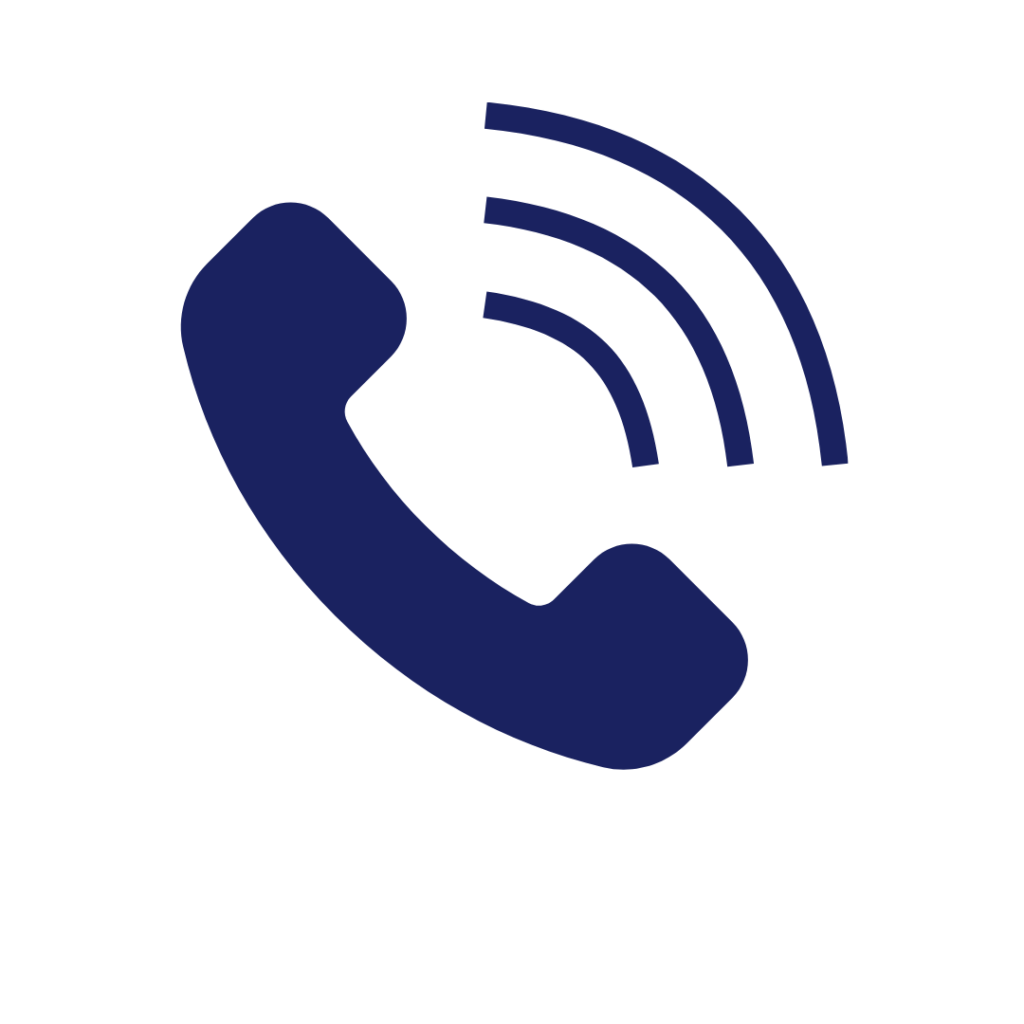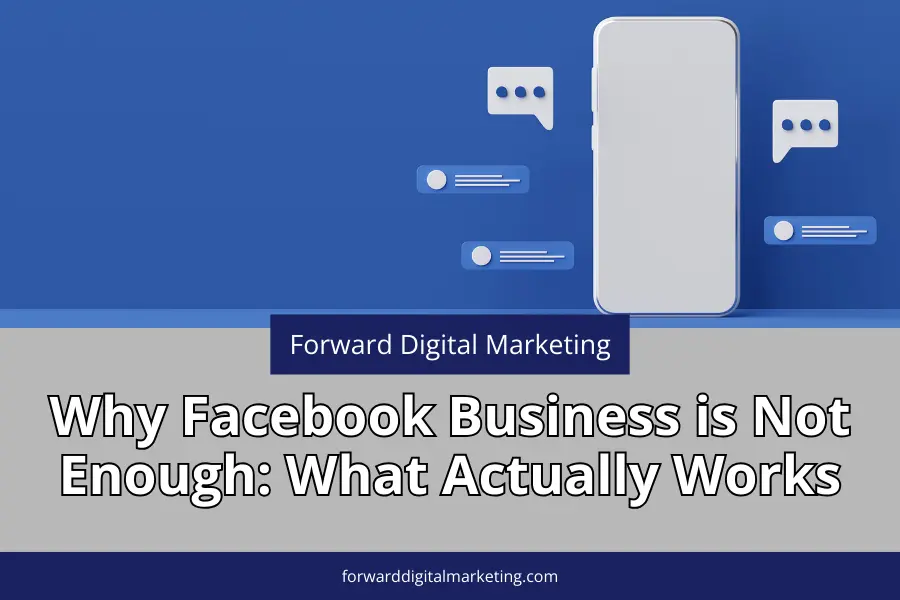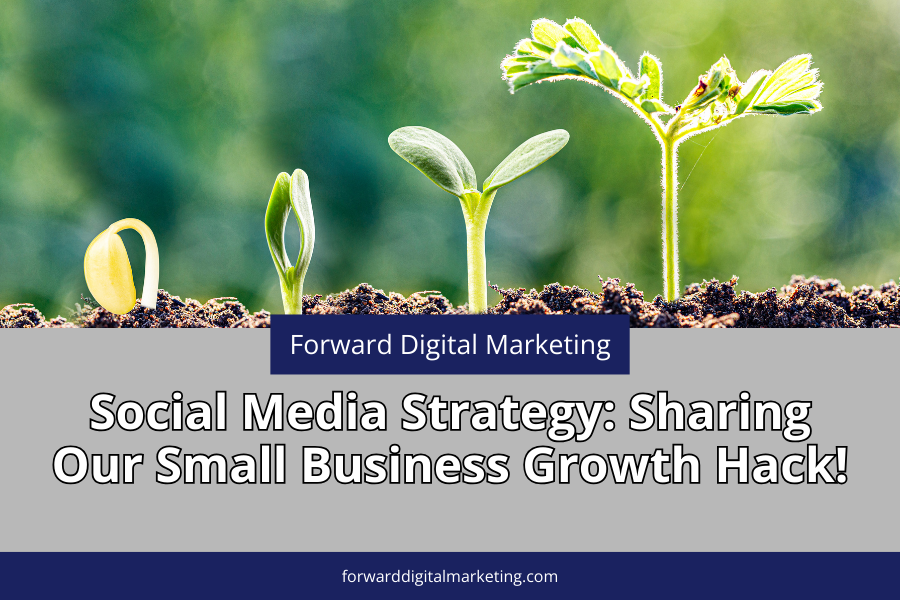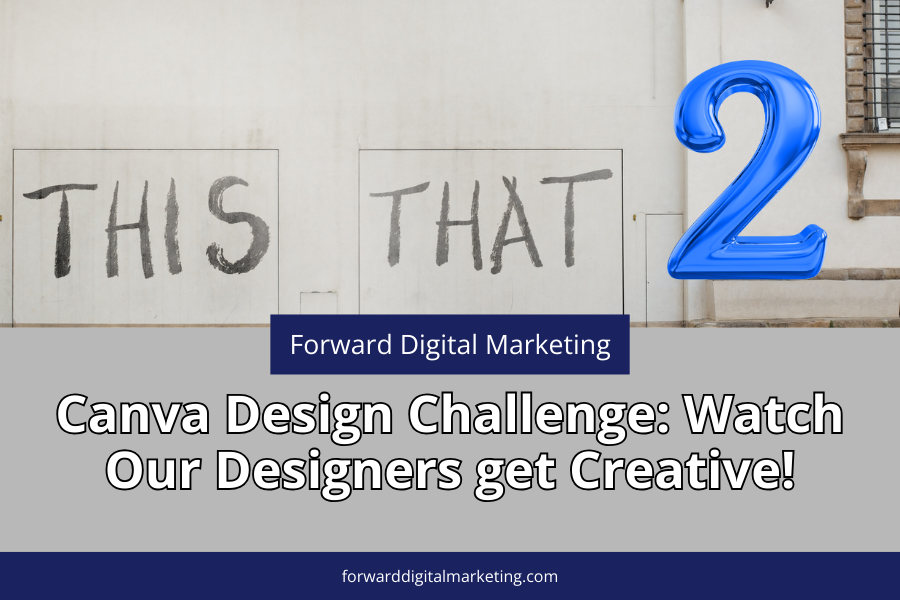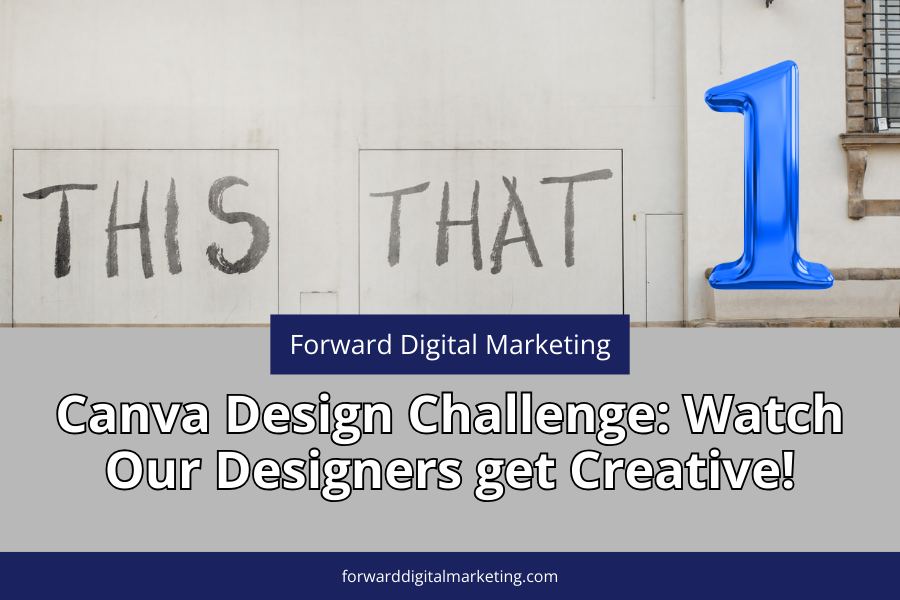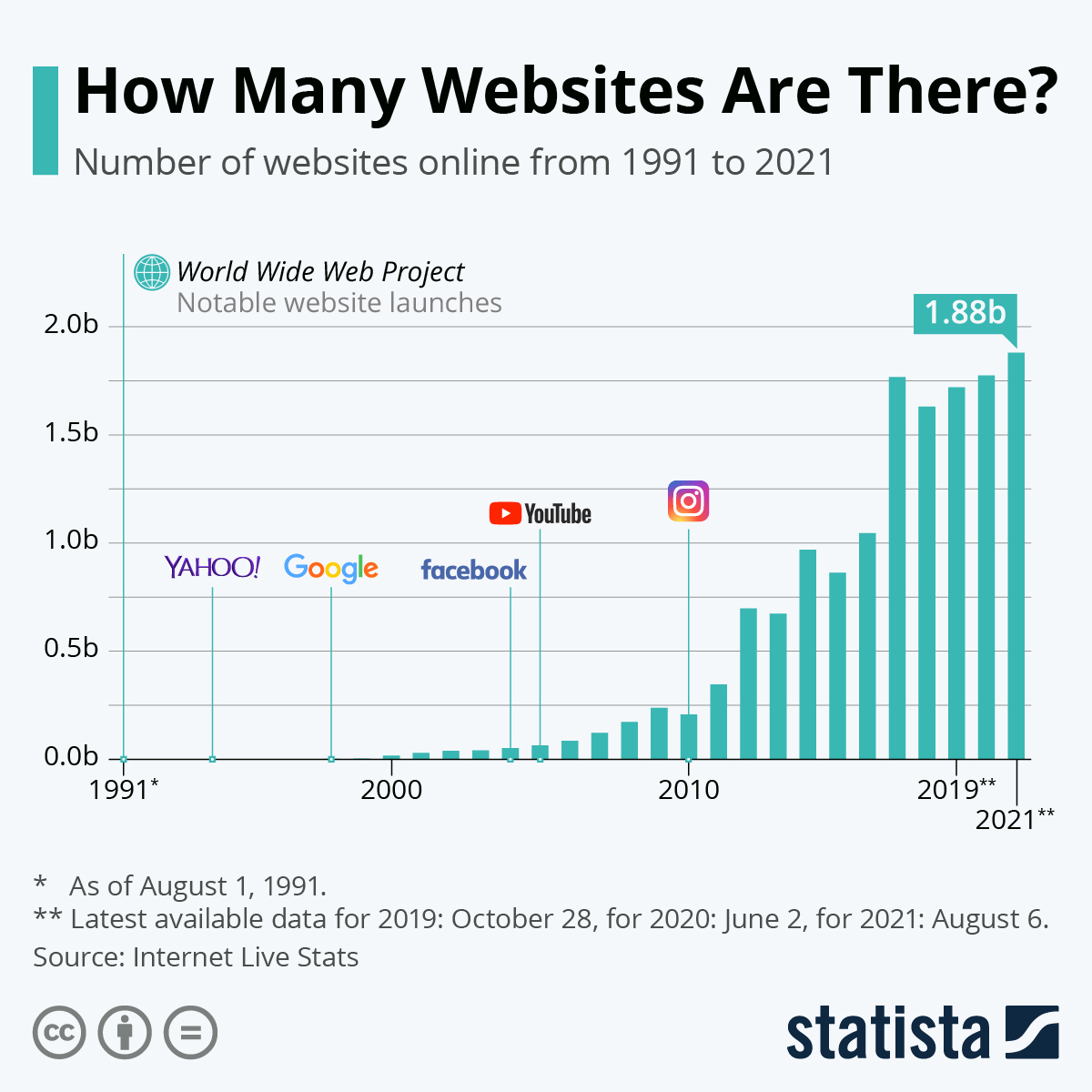Author: Jacqueline Elder
-
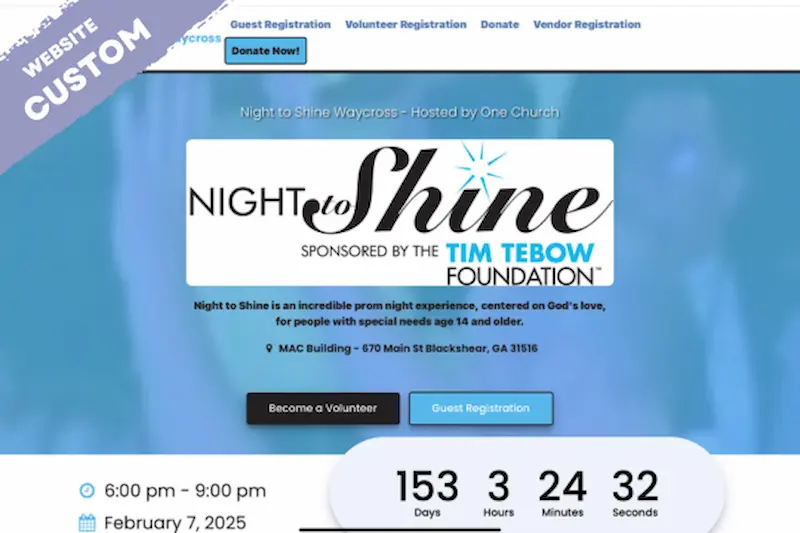
Night to Shine Waycross | A Tim Tebow Foundation Experience
Night to Shine – Waycross is a local non-profit representation of Tim Tebow’s Foundation, providing a “prom-like” experience for the disabled. They called us with their needs and Forward Digital Marketing jumped to help. While it is a once-a-year event, it still needs a website. This Custom Website has a registration system built in so that they focus their attention on the vent itself while all of the business part is automated online. We appreciate their commitment to help this special community feel extra loved! Visit their website: www.nighttoshinewaycross.com -

5 Costly Website Mistakes for Small Businesses That Drive Customers Away (and How to Fix Them Fast)
Common website errors that drive customers away
The holidays are around the corner! While you’re preparing for more customers your website mistakes might be quietly working against you. Yet for a small business, a bad website doesn’t just look unprofessional, it actively drives customers away. It’s important to be able to audit your website with quick confidence, because online shopping is at an all-time high, and customers expect a seamless experience. Read on to learn the top five website mistakes that are costing you money. Plus, learn how to fix them before the busiest season of the year!

1. Your site takes forever to load
First, let’s start with the most common website mistakes that turn visitors away before they even see your site: speed and performance. Slow sites lose visitors in seconds and in a world of short attention spans and on-demand service, a delay of even 2–3 seconds can cut your conversion rate in half!
Website speed, or performance, refers to how quickly a browser can fully load website pages, and poor speed results in poor conversion rates. One study found that decreasing their homepage load time by 100 milliseconds resulted in a 1.11% increase in session-based conversion. Another, looking at Walmart, discovered that improving page load time by even one second increased their conversions by 2%. An even more impressive improvement happened for one retailer who experienced a 12-13% increase in sales after cutting its page load time in half. A faster site makes customers happier. It also helps you rank higher in Google.You can use this great tool to audit your website. The bottom line: speed matters, and optimizing your website is key to optimizing your conversion rates.
–
Fix: Invest in reliable hosting and speed optimization.
2. Your site isn’t mobile-friendly
Even if your site loads quickly, it won’t matter if visitors can’t use it easily on their phones. More than half of online traffic now comes from mobile: a whopping 62.4%. If your site looks broken or is hard to navigate on a phone, you’re losing sales every day.
For better or worse, mobile isn’t going anywhere. In 2005, only 6.1% of traffic was from mobile users, but within 10 years it grew to almost 40%. Now, in 2025, mobile traffic makes up the majority of users, and that number will only continue to rise. If your site isn’t mobile friendly, you’re losing easy sales. According to Optinmonster (2022), 77% of consumers purchase impulsively, and 70% of them make purchase decisions on their mobile devices within the first hour of seeing a product. If your website isn’t easy to scroll and navigate, consumers will quickly lose interest before ever completing their purchase with your small business.
–
Fix: Update to a responsive design that adapts to any screen size.

3. Customers can’t find what they need
Of course, a mobile-friendly design is only part of the picture — customers also need to find what they’re looking for without getting lost. Burying your phone number, address, or menu behind too many clicks creates friction. If a customer struggles, they’ll bounce to a competitor.
In a recent survey, 50% of internet users were able to predict where relevant content would appear in a standard website navigation structure.. While that might sound positive, if only half of your visitors can find the information they’re looking for, it’s actually a major problem. A disorganized website can lead to higher bounce rates and less time on your site, which ultimately lowers conversion rates.
–Fix: Place contact info and key calls-to-action front and center.
4. Outdated design signals “out of business”
Clear navigation helps, but if your site looks like it hasn’t been touched in years, visitors may still click away. Websites that look stuck in 2010 send the wrong message: if you don’t update your website, can customers trust you to keep up with their current needs?
The U.S. Chamber of Commerce found in a recent study that 55% of a brand’s first impressions are visual. If your website fails to meet that expectation from the start, you’re already losing potential customers. Updating your brand doesn’t have to be expensive, but it does have to be thoughtful. You need to understand your customer base better than anyone else in order to build a site that is visually appealing to your specific audience. Be wary of chasing trends that overhaul your website but ultimately only last for a small duration, leading to even more work.
To help you audit your website’s visual evolution use The Wayback Machine! If your site hasn’t changed visuals in 5 years, it’s time for a refresh.
–
Fix: A modern, clean design builds credibility instantly.
5. No clear call-to-action
Finally, even the best-looking site won’t drive results if you don’t tell visitors what to do next. Your website isn’t just decoration. If you’re not guiding visitors toward booking, calling, or buying, you’re leaving money on the table.
We can all agree that full-screen pop-ups are extremely annoying, but that’s not the only way to gather leads, close a sale, or drive customers to a specific page. Small pop-up windows in the sidebar, relevant hyperlinks within content, and easy-to-find “Buy Now” buttons show customers they’re expected to take action on your site. Remember: calls to actions (CTAs) allow you to collect valuable information from consumers so you can follow up with educational materials, sales promotions, and updates about your company. There’s no need to chase down consumers when they’re already on your site.
–
Fix: Add clear buttons and forms on every page.
Don’t let your small website mistakes cost you customers. By fixing these five common issues — slow load times, poor mobile design, confusing navigation, outdated visuals, and missing CTAs — you’ll keep visitors engaged, build trust, and convert more sales. Every second matters online, and even one weak spot can send customers to your competitors. Go audit your site today and look for these 5 website mistakes; even one small fix can make a big difference. If you discover gaps, Forward Digital Marketing builds websites designed to convert, so you can focus on running your business while your site does the heavy lifting. Ready to see what your website could do for your business? Contact us today for an expert eye to look over your site!

-

Eight Reasons My Small Business Need a Website?
Here are 8 reasons why your small business and brand need a website:
1. Google needs to know you exist!
If Google knows who you are, then everyone will be able to know who you are! In a world that is condensed onto our digital devices, your consumers are quick to ask a search engine “find a (enter product or service) near me…” and if you are not on Google, you don’t pop up on their radar. Even if you do not host a digital shop online, you should have your business name, products/services offered, contact information, and physical location (if applicable) published online for potential consumers to find! A one-page website is a minimum for any small business or brand!

2. You need to build credibility…
Ever searched for a business online and couldn’t find anything about them? Did you think that was a little… SUS.? Not having a website is a big red flag for consumers and will lead to a downturn in sale conversions and a lack of trust for your brand.
3. Your competition is already doing it.
Your competitors are online and taking your potential consumers! Without an online presence, you cannot build your brand credibility, loyalty, or community, which means you can’t compete or sustain new conversions!
4. Take your store everywhere!
Sure, you may have a physical storefront, but why would you limit yourself to such a small group of customers?! Building a website allows you to create a network of consumers, suppliers, and investors that you normally would not be able to reach.
5. It’s YOUR name on the website!
Sure, you could put your products or services on other platforms, but who is really making the money then? After all of the fees, your net profits are desolated! Why not own your site and keep the money that is rightfully yours. Another plus is it’s your name in the URL. There is no “yourname.theotherbussinessgettingfreeadversting.com“

6. Free advertising!
Speaking of free advertising, that’s what your site is! If you build your website correctly (or better yet, we do it right for you!) you will show up in search engine results! Showing up is just more advertising for you!
7. It shows customers why you’re the right fit for them!
Blogs, “about us” pages and values can all be published on your website. These little things can make a huge difference when a potential consumer is trying to decide between your brand and competitors.
8. It shows customers what great products you sell!
How can a potential customer know what you’re selling if you don’t show them?! Sure they could walk into your store or see your product on a friend, but allowing your consumers a place to scroll through your offerings in one place they can access anywhere will lead to more conversions and greater brand recognition!
Bottom line…
You’re missing out! Having your own website allows you to present your best self, stay relevant, be credible, and reach a whole new audience of potential consumers!
-
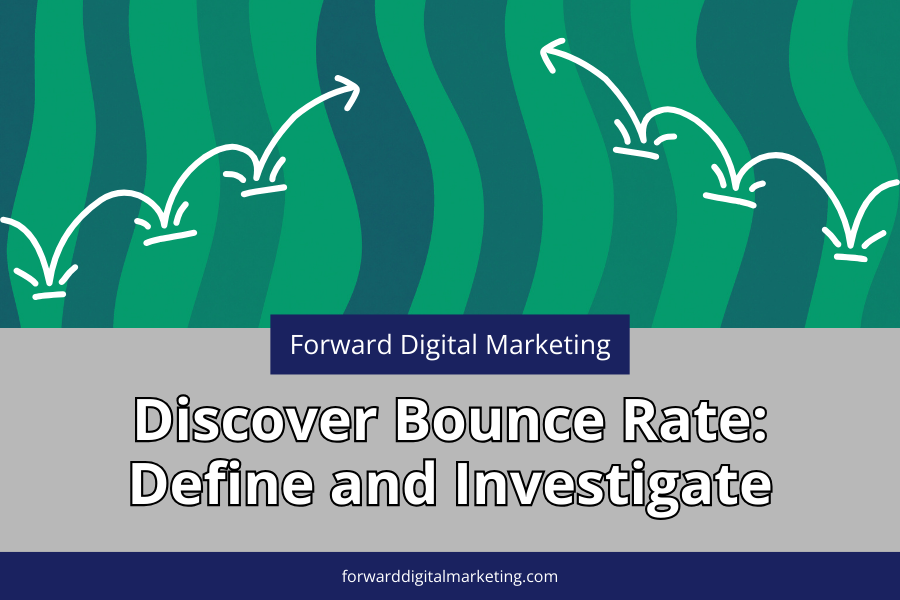
Discover if Your Website Bounce Rate is Good, Great!
Driving traffic to your website is a worthwhile cause! But what happens once they get to your site? Do they stick around or bounce right back off, driving your bounce rate up?
The bounce rate is the percentage of single, individual visitors to a particular website who navigate away from the site after viewing only one page. Your site’s bounce rate is an important insight that gives you a look into how engaging your site content is.
Having a bad bounce rate could indicate there are issues within your website! It could also mean that your content is just not any good. Let’s work through the good, the great, and the could be better bounce rates and learn how to improve yours!

Bounce Rate is Defined as “the percentage of individual visitors to a particular website who navigate away from the site after viewing only one page.” This is different from an exit rate, in which the user only leaves the page, not the site. What’s a Good Bounce Rate?
A good bounce rate is based on your website’s needs, so giving an exact number is not so easy. A bounce rate between 56% to 70% is on the high end, but not the end of the world! If your website is built to drive traffic to other sites, this rate might be right where you need to be!
A bounce rate between 25%-30% is unusually good… but it can happen! Don’t be spoiled by these numbers, because they are not easily maintained. Anything under 40%, that’s not caused by a broken Google Analytics install, is something to be very proud of! This is proof that your website is professionally built, well engaging, and meeting the needs of its users.
Where the majority of good website bounce rates will fall is in the 35%-55% range. Once it starts to creep up towards the 60% range, it’s time to take a look at individual pages’ bounce rates and see what is causing the rate to spike.

How Can I Fix My Website’s High, Climbing Bounce Rates?
So you’re bounce rates still aren’t where you’d like them to be… Here are some things that could be affecting your bounce rate negatively:
- – Your Page Speed is LOW!
- – Annoying, Badly Designed Pop-ups
- – Website is not User Friendly
- – Page, Meta Titles Are Not Optimized
- – Page is Blank, Loading Error
- – Content Lacks Quality…
- – Pages Aren’t Mobile-Friendly– Unnecessary Plugins
- – Google Analytics is not Set-up Correctly
Slow Loading Pages:
The most common contributor to slow loading pages are unoptimized images. If you upload a large photo to your website, just to scale it down, you could be taking up valuable bandwidth space that is slowing down your site!
Poor Design:
When someone enters your site, are they automatically bombarded with large pop-ups, chatbots, or screens held hostage until the user has given you something? Do six invisible videos automatically start playing with sound? Do page buttons only work when you click the text just the right way or does the text wrap in weird ways under images, making it impossible to figure out what you’re trying to tell the audience?! Though all of this may seem extreme and never done on purpose, it could be what is driving your visitors away!
Not Mobile Friendly:
Does your website do all sorts of back flips when a user views it with their mobile phone or tablet? The number one factor is that your website is not mobile responsive! Mobile responsive website automatically correct proportions to fit the screen it is viewed on. Rather than designing layouts that can be “scaled-down,” website designers have to think about each element individually!
Will the text still show up and be legible? How can a user navigate to different pages? Does the mobile site have the same content as the other devices? All of this goes into creating a fully user-friendly mobile site… and which is so important when over 57% of all site visits are now through mobile devices!
Bounce Rate and SEO
Using correct keywords draws in the correct user! If a user is looking for rubber duckies and finds your site, which is selling pineapples, they won’t stick around very long! Maybe your page keyword is “yellow” and when that user is looking up “yellow rubber duckies,” your site pops up! It’s great that your website is found, but it is found by the wrong consumer… by doing the research and optimizing your website pages to the max, you attract individuals who are actually looking for sites like yours! This means they won’t bounce as fast because they are genuinely interested in the products, services, or information you offer.
Bottom Line: Define Your Bounce Rate Goals and Dig In!
The bounce rate is an important analytic to keep your eye on. It may not look like ours, your neighbors, or [insert large corporation here], but that’s because the goal of each website may be different! Be sure to set realistic goals and watch your data to figure out what works and what is driving your audience away. It might be as simple as fixing your keywords, or it could be as complicated as rebuilding poorly performing pages!
Don’t know how to check your bounce rate? Click here so that we can help you set up your Google Analytics! After set up, you’ll be able to monitor bounce rate and way more! Already have Google Analytics set up, but don’t know where the breakdown is? Let’s run a website audit to get you the information you need to optimize!

